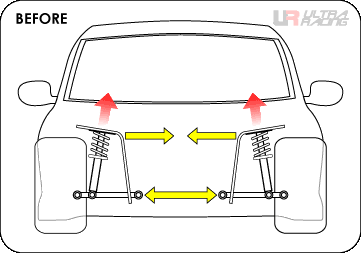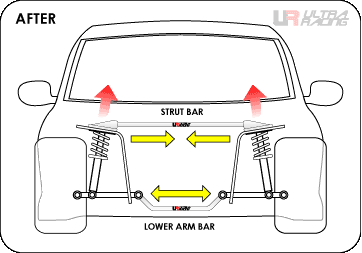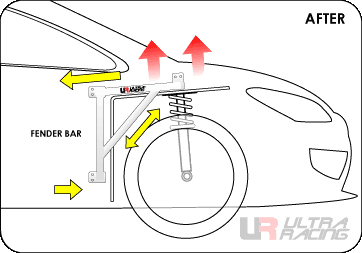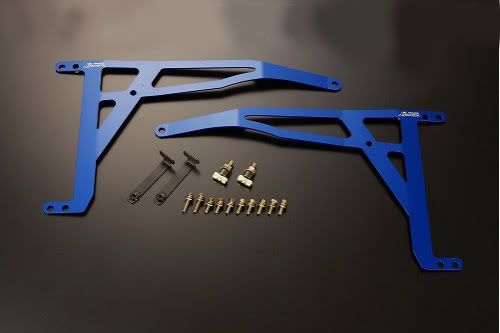Let's face it, if we're talking about pure straight line speed the Teg is never going to compete with Evos, various Subaru's and large displacement engined cars. It's not what this car is about. The DC5 really is about the great handling, high revving engine and providing fantastic driving enjoyment (not forgetting looking pretty).
Don't get me wrong though, the Teg is a quick car in straight line. It's just from a purist point of view I believe you would get more enjoyment from improving cornering speed i.e. Handling and brakes first before any power mods. As such, my modication roadmap is as follows:
- Handling stage 1
- Brakes
- Power and Aerodynamics + Handling stage 2 and Track mods
- Handling tweeks
- Power
- Brakes
Phase 3 could of course be separated out further, but I wanted to hit it all in one go for project and cost reasons. Aero we have covered off in previous posts and power + track mods I will cover off at a later date. This leaves handling stage 2 (specifically mechanical grip) which I'll start talking about now.
For application on my car, I generally have four categories for improving handling:
- Geometry
- Tyres
- Reducing unsprung mass
- Increasing structural rigidity
Geometry
At this stage I will be applying the more aggressive geo settings that Umemoto San advised combined with input from TGM. And of course this is coupled with the race spec Nitrons which I talked about in a previous post.
Tyres
As covered off in a previous post, I'll be going for Yokohama ad08's. Tyre dynamics is vast and complex and I won't even pretend to understand all the principles. However I will give a quick, high level laymen explanation on the benefits of a good tyre choice and how this works. This is by all means not 100% accurate and doesn't take into account many many factors, but as a very simple guideline holds true.
Essentially, you are looking to increase grip by maximising the tyre surface area in contact with the road. The most obvious approach is of course slick tyres. However in real life applications these are banned and dangerous on roads as there are no treads to channel away water in wet weather; you would essentially aquaplane everywhere. A compromise has to be made which in essense are treads grooved into the tyre. How much tread you run and in what type of pattern is very much a detailed science as you want to minimise the amount of tread but optimise the water channeling capability. From reviews, the ad08's provide great grip with enough water dispersion (admittedly not the best but I'm mainly a dry weather driver).
Tyre compound is next on the agenda. The softer the rubber you run, the more grip you will achieve (to a point!) as rubber will deform easier and maintain a larger contact patch with the road. However, the softer the rubber the less durable it is. As with all tyres, the ad08's will require some heating up for maximum performance but from reviews will provide good durability whilst providing a soft enough compound. Interestingly Yokohama have developed a new compound for the ad08's which in a nutshell enables the tyre to be softer that the ad07's for increased grip whilst retaining durability levels. I won't go into the science of it but it's easily googable.
Tyre wall stiffness is also important. When cornering, more lateral force is applied to the sidewalls of the tyre. You ideally want a stiff sidewall to avoid tyre deformation which will improve predictability and turn in sharpness. For non-semi slicks, the ad08's have been reported as having very stiff sidewalls. Remember also that the more camber you run, the more it leans on the tyre shoulder and therefore puts more load on the sidewall ;)
Anyway, I shall leave it there for now and move on to some of the benefits of a good tyre:
- Increased grip:
- Faster cornering
- Shorter stopping distances
- Sharper steering response
- Better turn in predictability
Reducing Unsprung Mass
Unsprung mass is a term used to describe the parts of a car that are not supported by the front and rear springs. This would include:
- Wheels/tyres
- Brake assemblies
- Rear axle assemblies
- Components of the suspension itself
- Other structural members not supported by the springs
If unsprung components have a high mass they are harder to accelerate/decelerate and thus it is more difficult for the suspension to maintain a consistent tyre load.
The unsprung mass of my car will be reduced with the following parts I have covered in previous posts:
- Wheels - Volk Racing CE28n
- Function7 Lower Control Arms
- Nitron Coilovers -Very very light but strong!
Increasing Structural Rigidity
Flexing of the car's structure can cause traction loss as well as changing steering geometry as the body flexes. Therefore increasing structural rigidity will reduce the amount of flex throughout the body.
The most effective way to increase the rigidity of the shell is to weld in a roll cage, additional spot welds etc etc. However as my car is not a dedicated race car this is not an option. Therefore my mods for increasing the structural rigidity will be as follows:
- A more rigid front strut bar
- Rear upper tower strut bar
- Front fender braces
Front tower strut bars are used heavily in conjuction with MacPherson strut suspension to provide extra stiffness between the strut towers. With a MacPherson strut suspension, the spring and shock absorber are combined in one suspension unit. The entire vertical suspension load is transmitted to the top of the vehicle's strut tower, unlike a double wishbone suspension where the spring and shock absorber may share the load separately. The towers are part of the body structure of the car. The bottom side of the strut towers bolt up to a ball joint and lower control arm, which is also bolted up to the body of the car. The bad side of this is that the body of the car acts as a chassis. Since the suspension is connected directly to the body, a certain amount of body flex is to be expected and thus the negatives of body flex as mentioned earlier can be experienced.
Think of the strut tower bar like taping up a cardboard box. The box is flexible before the top is closed and taped. Once the sides and top of the box get taped together, the box structure becomes rigid and strong. The strut tower brace boxes up the upper part of the MacPherson strut suspension, and forms a full circle of bracing to help prevent unwanted suspension flex. As the chassis is effectively tightened, the car should feel calmer and more controlled when cornering. This is best explained by the below diagrams from Ultra Racing.
Now the DC5 comes with a front tower strut however as with all things it can be improved upon. As such, I have got the beefier P1 Racing front strut bar, developed by Buddy Club UK for their Time Attack cars as mentioned before.
Rear Upper Tower Strut Bar
The DC5 comes with a rear strut bar as standard. Of course this can be improved upon but I decided to take a different approach and support the rear strut as opposed to replacing it. This is done in the form of the Mugen rear upper tower strut (also covered in a previous post). This strut sits a distance above the rear strut bar and provides increased rigidity higher up, thus providing support to the stut tops below. Below is an itr-dc5 member's car with the Mugen rear upper strut and OEM replacement Spoon rear strut.
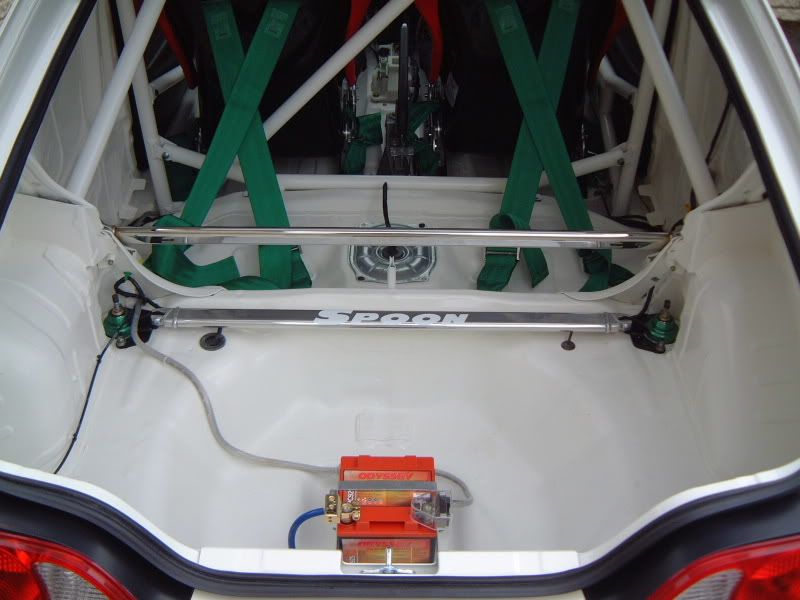 |
| The OEM rear strut bar normally sits where you see the Spoon aftermarket bar here. The Mugen strut is the bar above it, in effect halfway up the passenger seat if it were still there |
Front Fender Braces
The joint between the A pillar and front chassis is subject to twisting by large impact and drag forces. A fender brace prevents the flexing of the front frame and achieves almost the same effectiveness as installing roll bars that go through the firewall. As a consequence, it considerably improves your front grip and cornering speed. In, summary it isolates surrounding body flex to enable your suspension to do what it's supposed to do!
Recapping back, this is one mod Umemoto San highly recommended for a road car. It's worth noting that a lot of enthusiasts seem to pass over this mod!
As I haven't posted up a pic of the J's fender braces before, here they are below to finish off this post:

